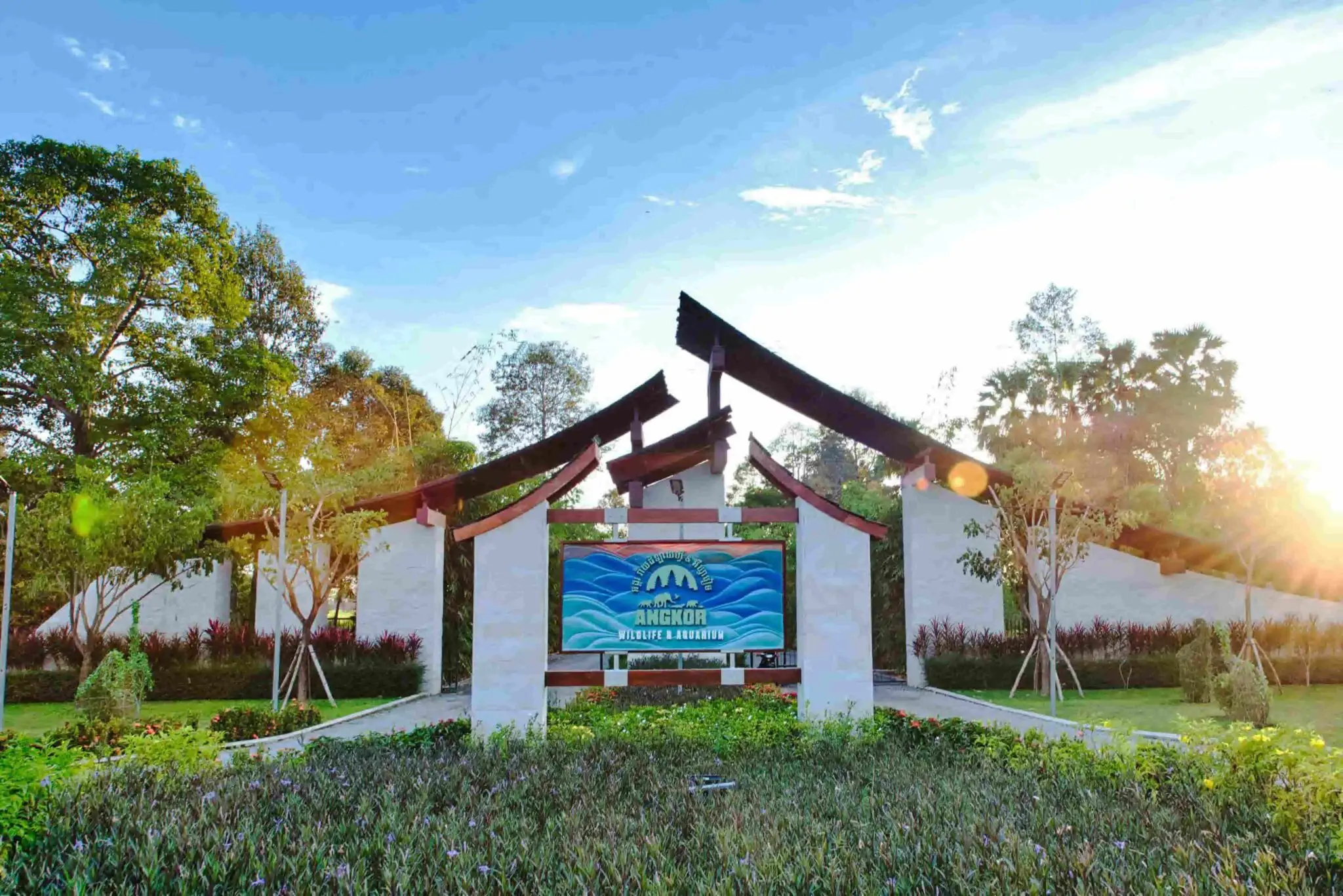Conservation and Tourism in Cambodia: A Growing Alliance
Cambodia is establishing itself as a destination where conservation and tourism intersect, focusing on eco-tourism and sustainable practices. For travelers interested in responsible tourism, Cambodia offers rich biodiversity and immersive experiences that contribute to wildlife preservation and cultural protection.
Table of Contents

The Rise of Eco-Tourism in Cambodia
Eco-tourism in Cambodia has seen significant growth, contributing to approximately 21% of Cambodia’s GDP in 2019, with interest in nature-based tourism on the rise as a part of the post-COVID-19 recovery strategy. These responsible travel practices benefit local communities, protect biodiversity, and offer travelers the chance to engage with Cambodia’s natural beauty while supporting conservation efforts. Learn more about the growth of Cambodia’s eco-tourism sector, and how it’s contributing to rural economies and sustainable development.
Angkor Wildlife & Aquarium: A Conservation-Driven Attraction
Angkor Wildlife & Aquarium exemplifies Cambodia’s commitment to conservation tourism, integrating sustainable tourism practices to support the SDGs. As a state-of-the-art, $18 million facility designed by ICM, the aquarium not only promotes ecological awareness but also generates local employment opportunities, aligning with Goal 8: Decent Work and Economic Growth.
Through interactive exhibits and educational programs focused on native Cambodian species, Angkor Wildlife & Aquarium enhances environmental awareness and highlights the need for biodiversity preservation, which directly supports Goal 15: Life on Land. Its practices of responsibly managing natural resources and promoting environmental stewardship also contribute to Goal 12: Responsible Consumption and Production.
Furthermore, by educating both locals and tourists on the importance of protecting Cambodia’s unique ecosystems, the aquarium fosters a sense of mutual understanding and cultural appreciation, resonating with Goal 4: Quality Education and Goal 11: Sustainable Cities and Communities.
This positioning makes Angkor Wildlife & Aquarium a model for sustainable tourism that prioritizes public engagement and conservation, aligning effectively with the broader goals of the 2030 Agenda.
Siem Reap: Expanding Tourism through Wildlife
Siem Reap, widely recognized for the iconic Angkor Wat temple complex, is expanding its tourism offerings to include wildlife-focused attractions that cater to eco-conscious visitors. This shift not only supports biodiversity but also provides a richer travel experience that connects tourists to Cambodia’s natural environment, encouraging responsible engagement with local ecosystems.
One notable example is Angkor Wildlife & Aquarium, which combines educational programming with conservation efforts. Positioned in central Cambodia, this pioneering facility has established itself as a sanctuary for endangered animals, accepting donations from individuals or institutions that can no longer manage these species. By showcasing native Cambodian wildlife, Angkor Wildlife & Aquarium provides a unique window into the region’s ecosystems while setting a high standard for sustainable tourism practices.
Beyond Angkor Wildlife & Aquarium, Siem Reap has embraced eco-tourism initiatives that highlight wildlife and environmental preservation. Guided tours of wildlife conservation areas, sanctuaries, and nature reserves offer tourists opportunities to engage with Cambodia’s rich biodiversity. These attractions position Siem Reap as a leader in ethical tourism, giving travelers an alternative way to explore the region while supporting Cambodia’s broader conservation efforts. For a closer look at how wildlife-centered tourism is shaping Siem Reap, read the article on Wildlife Enters Siem Reap Tourism – IPS TV Cambodia.
Cambodia’s National Ecotourism Policy and Long-Term Conservation Goals
The Cambodian government has introduced the National Ecotourism Policy 2019-2028, which outlines sustainable practices aimed at protecting natural resources and cultural heritage while fostering tourism growth. This policy reflects Cambodia’s commitment to ensuring its ecosystems endure for future generations and addresses the need for diversified tourism offerings that benefit both urban and rural communities. For an in-depth look at the policy and its strategic goals, access the full document on Cambodia’s National Ecotourism Policy.
Preserving Cambodia’s Cultural and Heritage Sites
Beyond its natural attractions, Cambodia places a strong emphasis on cultural preservation, as demonstrated by UNESCO’s heritage initiatives. Historic sites, such as Angkor Wat and other culturally significant locations, are essential to Cambodia’s identity and tourism appeal. Responsible tourism at these sites not only enhances visitor experience but also plays a critical role in protecting Cambodia’s heritage. For additional information on UNESCO’s conservation efforts, visit their page on Cambodia’s World Heritage Sites.
Sustainable Tourism for a Lasting Impact
Cambodia’s eco-tourism and conservation strategies serve as a model for sustainable tourism, creating experiences that protect wildlife, honor cultural heritage, and support local economies. Facilities like Angkor Wildlife & Aquarium embody these principles, prioritizing both ecological preservation and visitor engagement. Through initiatives that support biodiversity, educate the public, and foster a sense of responsibility, Cambodia is enhancing its reputation as a leader in responsible tourism, building a future where conservation and travel coexist harmoniously.

